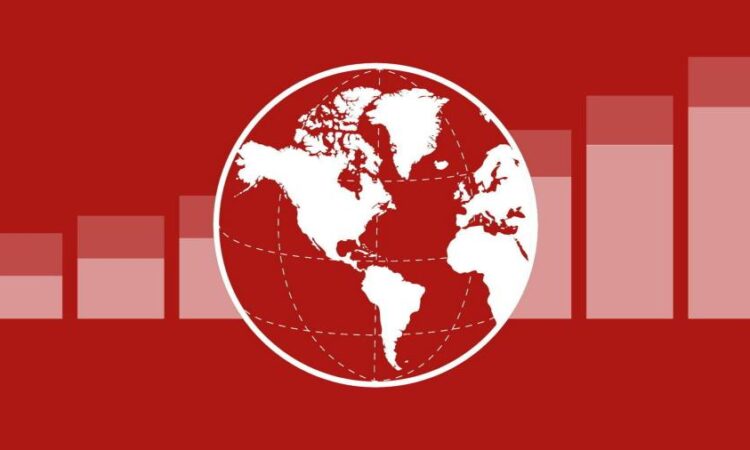
Receive free Markets updates
We’ll send you a myFT Daily Digest email rounding up the latest Markets news every morning.
US stocks advanced on Friday after the Federal Reserve’s preferred measure of inflation fell to its lowest level since the start of the coronavirus pandemic, lowering the chances of another interest rate rise in September.
Wall Street’s benchmark S&P 500 finished 1 per cent higher on the day, and added 1 per cent over five sessions for its third straight week of gains. The tech-heavy Nasdaq Composite had its best day since late May with a 1.9 per cent increase, and gained 2 per cent for the week.
Friday’s moves came after the US personal consumption expenditures rose at an annualised pace of 3 per cent in June, down from 3.8 per cent in May. That was the index’s lowest level since March 2021 and also in line with economists’ expectations.
The annualised increase in the “core” PCE index — which strips out volatile food and energy prices and is also closely watched by policymakers — eased more than expected to a 20-month-low of 4.1 per cent. Goods prices came in 0.6 per cent lower than last June, a sign of deflation in the economy.
Separate data showed US wage growth increased at a slower than expected pace in the second quarter, after figures out earlier in the week suggested gross domestic product was stronger than expected over the same period.
The flurry of data helped boost hopes that inflation will return to the Fed’s 2 per cent target “without the need for further rate hikes and a recession”, said James Knightley, chief international economist at ING. The Fed on Wednesday lifted interest rates to a 22-year high.
US government bond prices rose, with the yield on the two-year Treasury falling 0.06 percentage points to 4.88 per cent, while the yield on the 10-year note fell by 0.06 percentage points to 3.95 per cent.
Investors were also grappling with the Bank of Japan’s decision to ease controls on its government bond market. Policymakers, in effect, widened the trading band on long-term yields after saying they would offer to buy 10-year Japanese government bonds at 1 per cent in fixed-rate operations. The BoJ said its previous 0.5 per cent cap on those yield was now a “reference” rather than a “rigid limit” and that it would use bond purchases to stop yields climbing above 1 per cent.
The 10-year yield on Japan’s government debt climbed as far as 0.57 per cent, a nine-year high.

European stocks had a more muted session, although Germany’s market edged to a record high even after data showing the region’s biggest economy stagnated in the second quarter, in the latest evidence of a broader slowdown across the eurozone. The Dax index climbed 0.4 per cent, while the region-wide Stoxx Europe 600 lost 0.2 per cent, having hit its highest level in more than a year the previous day.
Separate data showed German consumer prices rose 6.2 per cent year on year, in line with economists’ expectations.
Annual inflation in France, meanwhile, slowed to 5 per cent in July, down from 5.3 per cent in June. In Spain, the rate increased contrary to market expectations, rising to 2.1 per cent, from 1.6 per cent in the previous month. Growth slowed to 0.4 per cent over the same period, from 0.5 per cent in the previous quarter.
The European Central Bank on Thursday lifted interest rates for the ninth successive time, by 0.25 percentage points to 3.75 per cent, in an effort to tame the region’s stubborn price pressures.
While policymakers left the door open for more tightening, the majority of investors bet that rates would remain unchanged at the ECB’s next meeting in September, according to data compiled by Refinitiv and based on interest rate derivatives prices.
Oil prices continued to rise, with international benchmark Brent crude gaining 0.9 per cent to $84.99 a barrel, and US marker West Texas Intermediate adding 0.6 per cent to $80.58 a barrel.





